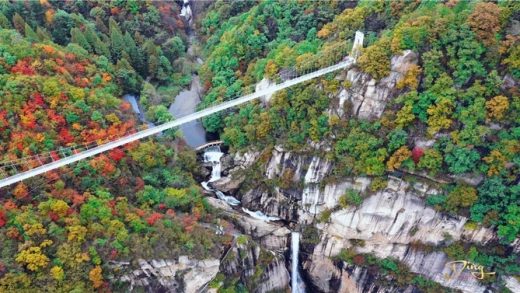1. Industry Risk Analysis
(1) Policy Risk
The agricultural blockchain application industry currently faces the risk of policy uncertainty in different stages: In the early stage of policy formulation, the regulatory framework is vague, and the technical standards and data security specifications are not yet clear. The unclear compliance boundaries may lead to a sudden and significant increase in compliance costs for enterprises. During the policy implementation stage, there are regional differences in execution. Local governments vary significantly in terms of financial support for the “blockchain + agriculture” model and the scale of data opening. Cross – regional operations are prone to encounter implicit barriers. The technology subsidy policy has entered an adjustment cycle, and some demonstration projects face the risk of a decline in policy dividends. Moreover, the supporting regulations in key areas such as new agricultural input access and on – chain agricultural product traceability are lagging behind. Entrepreneurs may face the passive compliance pressure of “innovation first, supervision later”.
(2) Economic Risk
The agricultural blockchain application industry faces significant economic risks: Amid economic cycle fluctuations, capital tightening exacerbates the difficulty of financing, and the pressure of technology R & D and infrastructure investment increases sharply. The cyclical contraction of consumer demand causes fluctuations in agricultural product prices, leading to a decrease in the willingness to pay for value – added services such as blockchain traceability. As the industry is in its early stage and the business model has not been verified, the cost of market education is high during an economic downturn, and the customers’ payment ability declines. Policy and regulation lag behind technological development, and compliance costs may increase during an economic recession. The digitalization level of the traditional agricultural industry chain is low, and during cyclical fluctuations, the resistance to cooperation among various parties increases, which may hinder the process of data on – chain and ecological integration.
(3) Social Risk
The application of agricultural blockchain faces a significant risk of generational cognitive gap: Young entrepreneurs advocate technological transparency and traceability, but most traditional farmers lack trust in the underlying logic of blockchain and are prone to anxiety about privacy leakage during the data collection process. On the consumer side, Generation Z pursues digital traceability of agricultural products, while middle – aged and elderly consumers still rely on physical – channel certifications. The technology premium is not widely recognized, which creates market resistance. The generational digital divide leads to a sharp increase in the cooperation cost among participants in each link of the industrial chain. Data distortion caused by operational errors of grass – roots farmers may trigger a systematic trust crisis. The gap between technological idealism and real – world application scenarios is intensifying the industry’s social acceptance risk.
(4) Legal Risk
The legal risks faced by the agricultural blockchain application industry are concentrated in three aspects: data privacy compliance, the legal validity determination of smart contracts, and cross – border data transfer supervision. Entrepreneurs need to ensure that agricultural data collection complies with the “Personal Information Protection Law” to prevent administrative penalties caused by the leakage of users’ sensitive information such as biometric features. The automatic execution mechanism of smart contracts has not been clearly recognized by the current “Contract Law”, and there is a risk of performance disputes. When deploying nodes across borders, entrepreneurs may violate the regulations on cross – border data security assessment and face the risk of business interruption. In addition, the anonymity of blockchain technology can be easily used for gray – area transactions such as agricultural product smuggling, and there is a risk of joint liability in anti – money – laundering investigations. The legal validity boundary of electronic evidence in the agricultural traceability scenario is unclear, which may lead to ineffective evidence presentation in quality disputes.
2. Entrepreneurship Guide
(1) Suggestions on Entrepreneurship Opportunities
Current entrepreneurship opportunities in the agricultural blockchain field focus on agricultural product traceability, supply – chain finance, and data assetization: Develop a lightweight blockchain traceability platform (connecting with Internet of Things devices and local government quality inspection systems) to solve the problem of small and medium – sized farmers’ difficulty in obtaining premium for high – quality agricultural products. Build an agricultural supply – chain finance platform based on smart contracts (integrating land rights confirmation, yield prediction, and insurance data) to relieve the financing difficulty of growers. Explore data assetization models for agricultural carbon sinks and biological assets (combining satellite remote sensing and field sensors) to help new – type agricultural business entities activate intangible assets. Note that it is advisable to first enter the county – level characteristic agricultural product production areas supported by policies and jointly build pilot projects with local agricultural investment companies and cooperatives.
(2) Suggestions on Entrepreneurship Resources
Entrepreneurs in the agricultural blockchain field need to focus on integrating technological, policy, and industry resources. They should first connect to the agricultural digital platforms supported by local governments to obtain data interfaces and subsidy resources. They should cooperate with agricultural input enterprises and cooperatives to form trustworthy data collection nodes, introduce lightweight blockchain underlying technology service providers to reduce development costs, and use agricultural industry funds and supply – chain financial tools to solve the early – stage capital gap. At the same time, they should integrate the technical verification resources of agricultural research institutions to establish industry credibility, obtain policy – inclined resources by participating in industry standard setting, and focus on building a triangular resource support system of government – technology providers – industrial chain.
(3) Suggestions on Entrepreneurship Teams
Entrepreneurs in the agricultural blockchain application field need to form a composite team with both blockchain technical backgrounds and agricultural industry experience. The core members should include a CTO with the ability to develop distributed ledgers, an operations director familiar with the agricultural product supply chain, and a compliance expert well – versed in agricultural policies. It is recommended to maintain industrial sensitivity through the “technology partner + in – depth binding with agricultural cooperatives” model. The technology team should have at least 3 engineers who can write smart contracts and connect with Internet of Things data. The operations team should include marketing personnel with experience in implementing agricultural product traceability projects. The management should arrange 2 days a week for on – site inspections of planting bases and establish an agricultural expert advisory committee to dynamically adjust the technology implementation path. 30% of the team assessment indicators should be set to evaluate the coordinated improvement effect of blockchain node deployment efficiency and agricultural product traceability accuracy.
(4) Suggestions on Entrepreneurship Risks
Entrepreneurs in the agricultural blockchain application field need to focus on controlling data authenticity and technological security. They should first cooperate with agricultural regulatory departments and authoritative testing institutions to ensure the authenticity of source data on the chain and use mature blockchain frameworks to reduce the risk of smart contract vulnerabilities. Establish a dynamic compliance review mechanism, focusing on monitoring privacy – protection regulations (such as the “Personal Information Protection Law”) involved in scenarios such as agricultural product traceability and land rights confirmation, and deploy compliance audits in advance in the cross – border data circulation process. Prevent sensor data fraud through a dual – verification mechanism of “hardware collection + manual verification”, and implement a blockchain operation training program for small and medium – sized farmers to lower the usage threshold. In the early stage, start with high – value – added single – category agricultural products (such as organically certified products), obtain subsidies through government – cooperation projects to reduce the trial – and – error cost, and reserve 20% of the R & D budget to deal with the risk of new technologies such as quantum computing impacting encryption algorithms.





